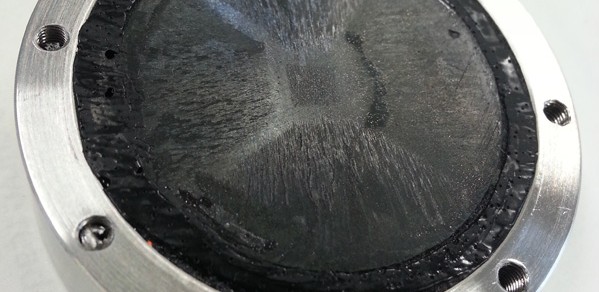
Electrical Engineer Dr Mark Ainslie is looking at how superconductors can make electric motors work better.
Roughly a third of electricity in developed countries is used in industry. Two-thirds of this is used by electrical motors in industry, to drive machines like fans, pumps and conveyors.
Dr Mark Ainslie
"Roughly a third of electricity in developed countries is used in industry," he says. "Two-thirds of this is used by electrical motors in industry, to drive machines like fans, pumps and conveyors." If we could use superconductors to make motors more efficient then there would be massive energy savings.
Superconductors are materials that have no electrical resistance at low temperatures. Conventional materials in our electric power system, like copper and aluminium, do have resistance to electrical current and lose energy through heat.
One effect of their lack of resistance is that superconductors can be made into strong magnets. Superconductors come in two main forms for practical applications: wire and bulk form. The bulk form works particularly well as a magnet equivalent.
Mark explains: "When you apply and then remove a magnetic field to a bulk superconductor, a circulating current is induced in the material, due to Faraday’s Law of Induction. Then when you remove the magnetic field, the current persists because there's no resistance.
"That circulating super–current, or what we call ‘persistent current,’ produces a stable magnetic field above the superconductor, so you can use these materials as permanent magnet equivalents."
These magnets can be extremely strong. The strongest conventional magnets in existing machines have strengths of up to one Tesla (the measure of magnetic strength), but bulk superconducting materials have demonstrated capabilities of over 17 Tesla. In fact, Mark is part of the research team that recently beat the world record for the trapped magnetic field in a bulk high-temperature superconductor (See the news story).
With wire made from wire form superconductors, and magnets made from bulk form superconductors, you can make an extremely efficient and compact motor.
An electric motor converts electrical energy to mechanical energy. Permanent magnet motors operate based on the principle that a force is generated when an electric current flows in a coil that is in a magnetic field. This force acts on the magnets on the rotor (or rotating part), which rotates the shaft and delivers the torque to the load connected to it – for example, a fan or a pump.
The torque delivered by a motor is determined by three things: (1) its electrical loading (which is related to the current in the coils), (2) its magnetic loading (which is related to the strength of the magnets), and (3) the motor's total volume.
Mark is looking to replace conventional coils and magnets with superconductors. "This would provide a more efficient motor with a much higher power density because the electrical and magnetic loading can be increased without additional power loss", he says.
"So for a given volume of motor you can have a higher torque, and therefore power, with very low power losses. Or conversely, you can make existing motors in ships, aeroplanes and electric vehicles smaller without compromising the power requirements."
The project is fraught with technical complications, however. He and the team at the Department of Engineering have spent the last few years addressing practical issues to do with the motor.
Photo: Dr Mark Ainslie, Professor David Cardwell and Dr John Durrell members of the Bulk Superconductivity Group
"Superconductors work best with DC current", Mark explains, "not the AC current used in much of our electric power systems. The mechanisms that allow for no resistance for DC current cause a finite loss to occur in superconductors when AC current is used, and you need to cool them more, which requires more energy. So superconductors can, in certain circumstances, end up less efficient than conventional systems."
Mark is currently designing a cooling system for a motor. Even though he works with the so-called high temperature superconductors, that 'high temperature' still requires cooling below around 90 Kelvin (around -180°C).
The challenge is to design a system that uses liquid nitrogen to cool the motor, because without appropriate cooling superconductors cease to conduct efficiently and lose their remarkable electromagnetic properties.
The goal for the next three years is to overcome these problems and develop a prototype machine to take to industrial sponsors.
In the meantime, Mark is also linking superconductor research with his long-standing love of Japan. He is working with superconductivity research teams in Japan and is organising a superconductivity conference at King's next year where leading engineers, physicists and materials scientists from the UK and Japan can meet to exchange ideas and foster collaborative ties.
|
Dr Mark Ainslie is a Royal Academy of Engineering Research Fellow and a Junior Research Fellow at King's College. He works in the Bulk Superconductivity Group at the Department of Engineering. His father was an Electrical Engineer and he spent much of his childhood "tinkering in the shed with all things electronic". "I've always been good at Maths and Physics", he says, "and enjoyed learning how the world works through science." His love of Maths, Physics and technology led him to Engineering, which he combines with his interest in Japan. He studied Japanese at High School in Adelaide, Australia, and subsequently enrolled a double degree in Japanese and Engineering at the University of Adelaide, before taking his Engineering Masters at the University of Tokyo. |

